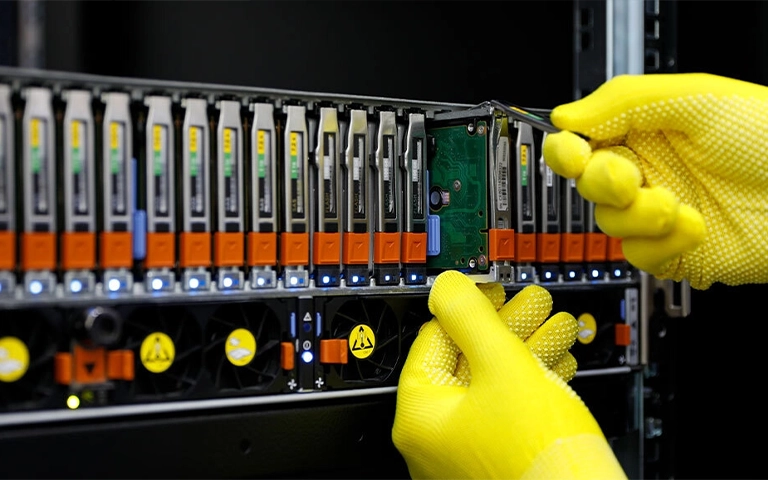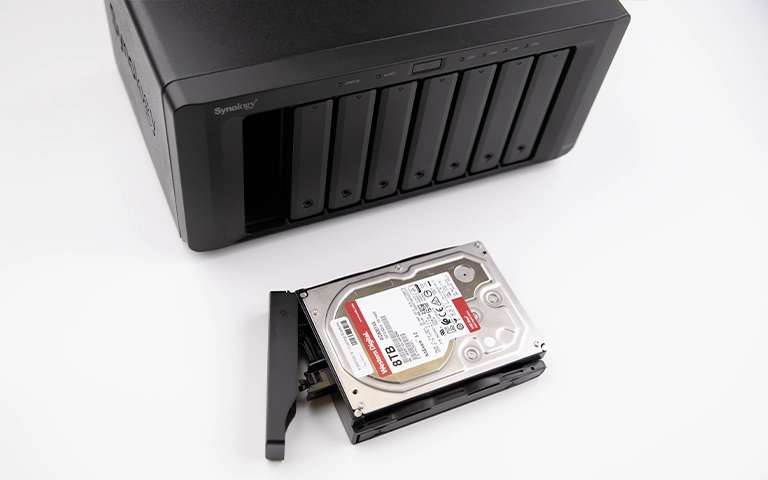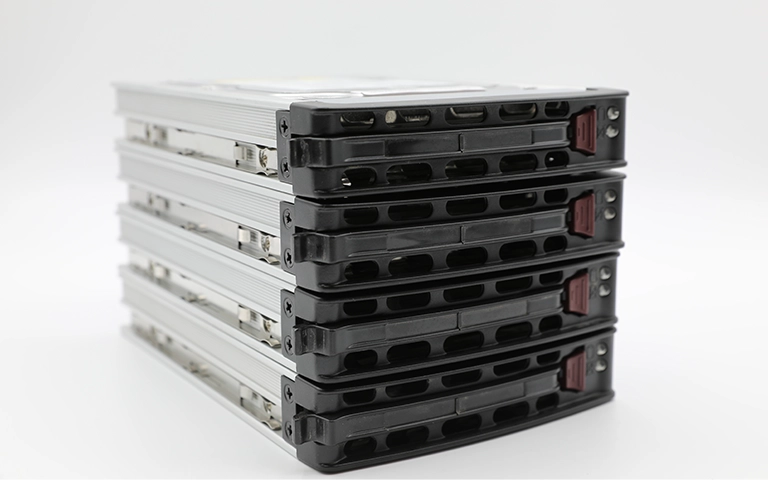When a RAID array fails, IT professionals often face intense pressure to restore operations as quickly as possible. The immediate reaction is usually to replace the failed drive, start a rebuild, and bring the system back online. Unfortunately, this approach can lead to permanent data loss.
Rebuilding a RAID array without first creating forensic images of each drive is one of the most frequent causes of unrecoverable data loss.
In fact, attempting a rebuild without proper preparation is one of the most critical mistakes an IT manager or systems engineer can make.

What Does Rebuilding a RAID Array Mean?
Rebuilding a RAID array involves replacing a failed disk and allowing the system to reconstruct the missing data using parity or mirror information from the remaining healthy drives. This process is usually automatic in RAID 5, RAID 6, and RAID 10 configurations.
While the rebuild function is designed to protect data, in reality it can cause irreversible damage if performed without proper precautions.
Attempting to rebuild without first creating sector-by-sector images of all drives can eliminate your only opportunity for a successful recovery.
Why Rebuilding Is Like Gambling With Your Data
Most Rebuilds Begin Without Drive Imaging
When a drive fails, it typically does so due to ageing components or physical wear. The other drives in the array, having endured the same workload and temperature cycles, are often nearing failure as well.
Rebuilding without imaging places intense read and write stress on these weakened disks. If another drive fails or encounters unreadable sectors during the rebuild, the entire array can collapse — leading to complete and unrecoverable data loss.
Trust the experts with proven results
A Second Drive Failure During Rebuild Can Be Catastrophic
RAID 5 can tolerate only a single failed drive. During a rebuild, the array performs intensive parity calculations and reads vast amounts of data from the remaining disks. If a second drive begins to degrade or encounters read errors during this process, the entire array structure collapses.
At that point, no usable parity remains, and conventional recovery methods become impossible.
Rebuilds Can Corrupt Otherwise Healthy Data
If drives are installed in the wrong order, if the RAID configuration is misidentified, or if the controller contains corrupted metadata, the rebuild will proceed using incorrect assumptions.
This results in invalid data being written over existing structures, effectively destroying any chance of later recovery.
Most IT Teams Skip Drive Health Checks Before Rebuilds
Many IT teams assume that the remaining drives in the array are healthy simply because they have not yet failed. This is a dangerous misconception.
Drives may contain pending reallocation sectors, slow response times, or hidden hardware faults that only surface under load.
A rebuild process places maximum read stress on each disk, often triggering the next failure during the operation itself.
Logical and Controller-Level Issues Are Often Misdiagnosed
Not every RAID failure stems from a physical disk fault. Some originate from corrupted RAID metadata, controller malfunctions, or deleted logical volumes.
Initiating a rebuild in these cases can overwrite essential structural data and alter the array configuration, eliminating what could otherwise have been a fully recoverable dataset.

Imaging Should Always Come Before Rebuilding
In professional data recovery, the golden rule is straightforward — always image every drive before attempting a rebuild or repair.
Disk imaging preserves the original condition of each drive, including bad sectors, parity layout, and file system metadata. With these complete images, engineers can:
Reconstruct the RAID array in a virtual environment
Identify precise points of failure
Recover and extract data securely without altering the originals
If a rebuild fails or a disk deteriorates during the process, these images provide a full safety net.
Without them, there is no recovery fallback, and any mistake may permanently erase the data.
Fast turnaround times for business-critical data
Why Even Professionals Get It Wrong
Even experienced IT managers and system administrators often fall into the RAID rebuild trap — and it’s not always due to inexperience. Common reasons include:
Previous successful rebuilds that create a false sense of confidence
Operational pressure to restore business systems rapidly
A lack of awareness that real-world rebuild conditions are rarely ideal
The truth is that a rebuild is only safe in a controlled environment, where drive health, parity consistency, and array integrity are fully verified beforehand.
In most real-world cases, the drives are ageing, the hardware has been under prolonged stress, and the system conditions are far from stable — making an on-site rebuild a serious gamble.

What to Do Instead of Rebuilding
If your RAID array has failed, avoid the instinct to rebuild immediately. Instead, follow these essential steps:
Stop all activity – do not attempt a rebuild, reinitialisation, or format.
Label and record the exact slot order of each drive within the array.
Create forensic images of all drives using professional write-blocking tools.
Contact a data recovery specialist before making any further attempts to repair.
Professional recovery laboratories can virtually reconstruct your RAID array in a controlled environment, repair corrupted structures, and safely extract data without risking additional damage or permanent loss.
Real Case: A Failed RAID 5 Rebuild That Destroyed Everything
A client reached out after one of the drives in their RAID 5 array had failed. Instead of imaging the drives first, they replaced the faulty disk and initiated a rebuild. Midway through the process, one of the older drives began generating read errors.
The rebuild failed, the parity data became invalid, and the entire array collapsed. What could have been a recoverable situation turned into permanent data loss.
Had the drives been imaged beforehand, we could have virtually reconstructed the array and restored the data without corruption or downtime.
To understand safe RAID rebuild procedures and see how our engineers handle similar cases, visit our RAID 5 recovery service page.

Don’t Risk Your Data With a Rebuild
At RAID Recovery Services, we help clients prevent permanent data loss by approaching RAID failures the right way. Our laboratory specialises in:
Forensic imaging of failed or degraded drives
Safe virtual RAID reconstruction in controlled conditions
Recovery from RAID 0, 1, 5, 6, 10, and custom configurations
Restoring data from both physical and logical failures
If your RAID array has failed, do not attempt a rebuild before imaging the drives.
Contact us first to safeguard your data and avoid irreversible damage.
Frequently Asked Questions
Can I rebuild a RAID array safely on my own?
Only if all drives have been imaged beforehand. Rebuilding without imaging can overwrite critical data and result in complete data loss.
Why is a RAID 5 rebuild particularly risky?
RAID 5 can only tolerate one failed drive. If another disk fails or develops read errors during the rebuild, the array loses redundancy entirely and the data cannot be restored conventionally.
What should I do when a RAID drive fails?
Power down the system, label each drive in order, and contact a professional data recovery service immediately. Never attempt a rebuild until all drives are imaged securely.
How can I tell if a RAID rebuild is failing?
Warning signs include slow rebuild progress, clicking or grinding noises, failed parity checks, or inconsistent volume sizes. These indicate that the array may be degrading further.
Can data be recovered after a failed rebuild?
In some cases, yes, but if valid data has been overwritten or the drives were never imaged, the chances of recovery drop significantly. Professional assessment is essential.